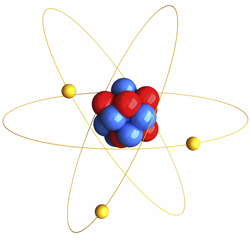Electrical control of magnetism for new devices
Conventional electronics are based on the charge of electrons. Spintronics, also known as magnetoelectronics, utilises the quantum property of electrons known as spin and its resulting magnetism. Every electron spin can be oriented in one of two directions - either up or down (reminiscent of bits that are one or zero) - and spintronics exploits this for information storage and logic operations. Such devices are at the forefront of new technologies for better memory, higher speed, lower power and more. Scientists initiated the EU-funded project 'Nanostructured magnetic materials for nanospintronics' (Namaste) to control and manipulate nano-scale properties of magnetic materials, thus paving the way for the development of novel magnetoelectronic and spintronic devices. Significant breakthroughs were made in many areas and have resulted in numerous publications in high-impact journals, including Nature. The project focused on piezoelectric effects (the generation of electricity in materials subjected to mechanical stress) and strain control. Local strain engineering was used to demonstrate the full control of local anisotropies in ferromagnetic nanostructures. Scientists demonstrated the use of piezoelectric strain to control magnetisation orientation and domain wall dynamics in ferromagnetic semiconductor devices. Piezoelectric strain was also used to control coercive field in ferromagnetic metal/piezoelectric stacks, and for the first-ever demonstration of voltage-induced, non-volatile switching of magnetisation in a metal in a zero magnetic field at room temperature. Namaste research resulted in several more firsts in the field of spintronics. Investigators discovered a new physical effect known as current-induced ferromagnetic resonance, and used it to measure the magnetic anisotropy constants of individual magnetic nanostructures. Scientists elucidated the nature of the Coulomb block anisotropic magnetoresistance effect, and delivered the first measurements of chemical potential anisotropies of a ferromagnetic material. Finally, Namaste scientists were the first to demonstrate the tunnelling anisotropic magnetoresistance effect at room temperature and its use in antiferromagnetic devices. Spintronics has potential use in all key components of information processing, including storage, memories, processors and optoelectronics. Namaste's significant advances in the engineering and manipulation of magnetism via theoretical approaches, the development of novel materials and atomic-scale characterisationshave pushed the frontiers for a new generation of high-tech devices.







